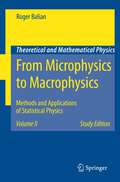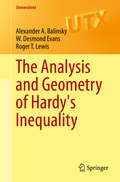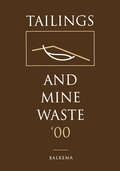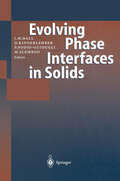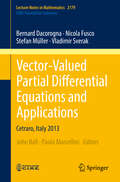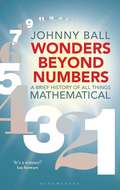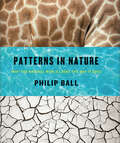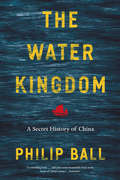- Table View
- List View
Productivity and Innovation in SMEs: Creating Competitive Advantage in Singapore and South East Asia (Routledge Focus on Environment and Sustainability)
by Azad Bali Peter McKiernan Christopher Vas Peter WaringThis book analyses the determining factors behind productivity and innovation amongst Small and Medium Enterprises (SMEs) in Singapore, and within the context of South East Asia, in order to offer recommendations for increasing productivity and aiding economic growth. SME firms are an influential driver of economic growth in advanced world economies like the USA, Germany, Japan and South Korea. Throughout the 2000s, Singapore experienced a decline in economic growth which was linked to decreasing productivity in its SMEs. The decline triggered a transformational policy by a Government intent on forging a ‘high skill–high productivity’ future. Given substantial evidence that low productivity growth occurred in sectors where immigrants dominated the workforce, the seeds of recovery focused on improving productivity and innovation amongst SMEs in those sectors. Hence, this book investigates the factors determining productivity amongst SMEs across the manufacturing sector. It utilises personal interviews with global experts and CEOs, combined with primary data collected from a major international Delphi survey, and interviews with 215 SME owners and managers in Singapore. This data helps us to better understand how these productivity-enhancing factors can be used to increase performance amongst SMEs. By investigating the nature and process of total factor productivity in Singapore’s SMEs, this book tells the policy story behind the revolution. To provide a comparative analysis, Singapore’s story is placed within a South East Asian context. The unfolding narrative contains important lessons for policy makers and industry globally, as they assess the strategic choices available to them for improving productivity and innovation. This book will be of great interest to students and scholars of innovation and productivity, as well as economic development officers, government policy advisors, SME business managers and sustainable businesses.
Productivity and Innovation in SMEs: Creating Competitive Advantage in Singapore and South East Asia (Routledge Focus on Environment and Sustainability)
by Azad Bali Peter McKiernan Christopher Vas Peter WaringThis book analyses the determining factors behind productivity and innovation amongst Small and Medium Enterprises (SMEs) in Singapore, and within the context of South East Asia, in order to offer recommendations for increasing productivity and aiding economic growth. SME firms are an influential driver of economic growth in advanced world economies like the USA, Germany, Japan and South Korea. Throughout the 2000s, Singapore experienced a decline in economic growth which was linked to decreasing productivity in its SMEs. The decline triggered a transformational policy by a Government intent on forging a ‘high skill–high productivity’ future. Given substantial evidence that low productivity growth occurred in sectors where immigrants dominated the workforce, the seeds of recovery focused on improving productivity and innovation amongst SMEs in those sectors. Hence, this book investigates the factors determining productivity amongst SMEs across the manufacturing sector. It utilises personal interviews with global experts and CEOs, combined with primary data collected from a major international Delphi survey, and interviews with 215 SME owners and managers in Singapore. This data helps us to better understand how these productivity-enhancing factors can be used to increase performance amongst SMEs. By investigating the nature and process of total factor productivity in Singapore’s SMEs, this book tells the policy story behind the revolution. To provide a comparative analysis, Singapore’s story is placed within a South East Asian context. The unfolding narrative contains important lessons for policy makers and industry globally, as they assess the strategic choices available to them for improving productivity and innovation. This book will be of great interest to students and scholars of innovation and productivity, as well as economic development officers, government policy advisors, SME business managers and sustainable businesses.
From Microphysics to Macrophysics: Methods and Applications of Statistical Physics. Volume II (Theoretical and Mathematical Physics)
by Roger BalianThis popular, often cited text returns in a softcover edition to provide a thorough introduction to statistical physics and thermodynamics, and to exhibit the universal chain of ideas leading from the laws of microphysics to the macroscopic behaviour of matter. A wide range of applications illustrates the concepts, and many exercises reinforce understanding. Volume II applies statistical methods to systems governed by quantum effects, in particular to solid state physics, explaining properties due to the crystal structure or to the lattice excitations or to the electrons. The last chapters are devoted to non-equilibrium processes and to kinetic equations, with many applications included.
From Microphysics to Macrophysics: Methods and Applications of Statistical Physics (Theoretical and Mathematical Physics)
by Roger BalianThis popular, often cited text returns in a softcover edition to provide a thorough introduction to statistical physics and thermodynamics, and to exhibit the universality of the chain of ideas leading from the laws of microphysics to the macroscopic behaviour of matter. A wide range of applications illustrates the concepts, and many exercises reinforce understanding. Volume I discusses the probabilistic description of quantum or classical systems, the Boltzmann-Gibbs distributions, the conservation laws, and the interpretation of entropy as missing information. Thermodynamics and electromagnetism in matter are dealt with, as well as applications to dilute and condensed gases, and to phase transitions.
The Analysis and Geometry of Hardy's Inequality (Universitext)
by Alexander A. Balinsky W. Desmond Evans Roger T. LewisThis volume presents advances that have been made over recent decades in areas of research featuring Hardy's inequality and related topics. The inequality and its extensions and refinements are not only of intrinsic interest but are indispensable tools in many areas of mathematics and mathematical physics.Hardy inequalities on domains have a substantial role and this necessitates a detailed investigation of significant geometric properties of a domain and its boundary. Other topics covered in this volume are Hardy- Sobolev-Maz’ya inequalities; inequalities of Hardy-type involving magnetic fields; Hardy, Sobolev and Cwikel-Lieb-Rosenbljum inequalities for Pauli operators; the Rellich inequality.The Analysis and Geometry of Hardy’s Inequality provides an up-to-date account of research in areas of contemporary interest and would be suitable for a graduate course in mathematics or physics. A good basic knowledge of real and complex analysis is a prerequisite.
Lake Victoria Wetlands and the Ecology of the Nile Tilapia
by John Stephen BalirwaThis volume is taken from an ecological study of wetlands undertaken in northern Lake Victoria (East Africa) between 1993 and 1996 with the major aim of characterizing shallow vegetation-dominated interface habitats, and evaluating their importance for fish, in particular, for the Nile tilapia.
Lake Victoria Wetlands and the Ecology of the Nile Tilapia
by John Stephen BalirwaThis volume is taken from an ecological study of wetlands undertaken in northern Lake Victoria (East Africa) between 1993 and 1996 with the major aim of characterizing shallow vegetation-dominated interface habitats, and evaluating their importance for fish, in particular, for the Nile tilapia.
Detergents (The Handbook of Environmental Chemistry #3 / 3F)
by F. Balk J. G. Batelaan J. G. Blumberg R. S. Boethling L. Butterwick P. Christophliemk J. S. Falcone T. Feijtel P. Gerike H. L. Gewanter P. A. Gilbert C.G.van Ginkel W. E. Gledhill D. Gleisberg J. L. Hamelink M. S. Holt H. L. Hoyt H. B. Kramer D. G. Lynch G. C. Mitchell H. J. Opgenorth H. A. Painter M. Potokar K. Raymond R. J. WatkinsonEnvironmental Chemistry is a relatively young science. Interest in this subject, however, is growing very rapidly and, although no agreement has been reached as yet about the exact content and limits of this interdisciplinary subject, there appears to be increasing interest in seeing environmental topics which are based on chemistry embodied in this subject. One of the first objectives of Environ mental Chemistry must be the study of the environment and of natural chemical processes which occur in the environment. A major purpose of this series on Environmental Chemistry, therefore, is to present a reasonably uniform view of various aspects of the chemistry of the environment and chemical reactions occuring in the environment. The industrial activities of man have given a new dimension to Environ mental Chemistry. We have now synthesized and described over five million chemical compounds and chemical industry produces about one hundred and fifty million tons of synthetic chemicals annually. We ship billions of tons of oil per year and through mining operations and other geophysical modifications, large quantities of inorganic and organic materials are released from their natural deposits. Cities and metropolitan areas of up to 15 million inhabitants produce large quantities ofwaste in relatively small and confined areas. Much of the chemical products and was te products of modern society are released into the environment either during production, storage, transport, use or ultimate disposal. These released materials participate in natural cycles and reactions and frequently lead to interference and disturbance of natural systems.
Tailings and Mine Waste 2000
by A. A. BalkemaThe objective of this text is to provide information on mill tailings and mine waste, and to discuss current and future issues facing the mining and environmental communities. With over 60 papers included.
Celebrating Soil: Discovering Soils and Landscapes
by M.R. Balks D. ZabowskiThis richly illustrated book celebrates the diversity, importance, and intrinsic beauty of soils around the world and helps the reader to understand the ways that soils are related to the landscapes in which they form. The book unravels the complex bond between humans and soils and the importance of soils in our cultures and everyday lives.Soil is critical to terrestrial life on earth. It underpins human food supply and provides materials on which we build our lives. Soil is out of sight and often out of mind, thus easy to overlook. Yet soil has tremendous variety and intrinsic beauty for those who care to look. Soil contains a memory of the events that have shaped the landscape and the environment. With help you can look at a soil and understand the stories that it has to tell. Written in a reader-friendly way, Celebrating Soil is a wonderful resource for farmers, horticulturalists, naturalists, students and others who are concerned about how soils are formed, work and are used.
Fundamental Contributions to the Continuum Theory of Evolving Phase Interfaces in Solids: A Collection of Reprints of 14 Seminal Papers
by John M. Ball E. Fried David Kinderlehrer Paulo Podio-Guidugli Marshall SlemrodA traditional way to honor distinguished scientists is to combine collections of papers solicited from friendly colleagues into dedicatory volumes. To honor our friend and colleague Mort Gurtin on the occasion of his sixty-fifth birthday, we followed a surer path to produce a work of intrinsic and lasting scientific value: We collected pa pers that we deemed seminal in the field of evolving phase interfaces in solids, a field to which Mort Gurtin himself has made fundamental contributions. Our failure for lack of space to include in this volume every paper of major significance is mitigated by the ma gisterial introduction prepared by Eliot Fried, which assesses the contributions of nu merous works. We hope that this collection will prove useful and stimulating to both researchers and students in this exciting field. August 1998 JohnM. Ball David Kinderlehrer Paulo Podio-Guidugli Marshall Slemrod Contents Introduction: Fifty Years of Research on Evolving Phase Interfaces By Eliot Fried. 0 •••••••••••••••••••••••••••••••••••••••••••••••• 0 ••••• 1 I. Papers on Materials Science Surface Tension as a Motivation for Sintering By C. Herring 33 Two-Dimensional Motion of Idealized Grain Boundaries By W. W. Mullins 0 ••••••••••• 0 ••••••••••••••••••• 70 Morphological. Stability of a Particle Growing by Diffusion or Heat Flow By w. w. Mullins and R. F. Sekerka 75 Energy Relations and the Energy-Momentum Tensor in Continuum Mechanics By J. D. Eshelby 82 The Interactions of Composition and Stress in Crystalline Solids By F. e. Larche and 1. W. Cahn 120 II.
Vector-Valued Partial Differential Equations and Applications: Cetraro, Italy 2013 (Lecture Notes in Mathematics #2179)
by John Ball Paolo Marcellini Bernard Dacorogna Nicola Fusco Stefan Müller Vladimir SverakCollating different aspects of Vector-valued Partial Differential Equations and Applications, this volume is based on the 2013 CIME Course with the same name which took place at Cetraro, Italy, under the scientific direction of John Ball and Paolo Marcellini. It contains the following contributions: The pullback equation (Bernard Dacorogna), The stability of the isoperimetric inequality (Nicola Fusco), Mathematical problems in thin elastic sheets: scaling limits, packing, crumpling and singularities (Stefan Müller), and Aspects of PDEs related to fluid flows (Vladimir Sverák). These lectures are addressed to graduate students and researchers in the field.
Wonders Beyond Numbers: A Brief History of All Things Mathematical
by Johnny BallIn this book, Johnny Ball tells one of the most important stories in world history – the story of mathematics. By introducing us to the major characters and leading us through many historical twists and turns, Johnny slowly unravels the tale of how humanity built up a knowledge and understanding of shapes, numbers and patterns from ancient times, a story that leads directly to the technological wonderland we live in today. As Galileo said, 'Everything in the universe is written in the language of mathematics', and Wonders Beyond Numbers is your guide to this language. Mathematics is only one part of this rich and varied tale; we meet many fascinating personalities along the way, such as a mathematician who everyone has heard of but who may not have existed; a Greek philosopher who made so many mistakes that many wanted his books destroyed; a mathematical artist who built the largest masonry dome on earth, which builders had previously declared impossible; a world-renowned painter who discovered mathematics and decided he could no longer stand the sight of a brush; and a philosopher who lost his head, but only after he had died. Enriched with tales of colourful personalities and remarkable discoveries, there is also plenty of mathematics for keen readers to get stuck into. Written in Johnny Ball's characteristically light-hearted and engaging style, this book is packed with historical insight and mathematical marvels; join Johnny and uncover the wonders found beyond the numbers.
Recent Advances in Matrix and Operator Theory (Operator Theory: Advances and Applications #179)
by Joseph A. Ball Yuli Eidelman J. William Helton Vadim Olshevsky James RovnyakThis volume comprises the proceedings of the International Workshop on Operator Theory and Its Applications held at the University of Connecticut in July 2005.
Housing Policy and Economic Power: The Political Economy of Owner Occupation
by Michael Ball Professor Michael BallPublished in 2002, Housing Policy and Economic Power is a valuable contribution to the field of Human Geography.
Housing Policy and Economic Power: The Political Economy of Owner Occupation
by Michael Ball Professor Michael BallPublished in 2002, Housing Policy and Economic Power is a valuable contribution to the field of Human Geography.
The Elements: A Visual History of Their Discovery
by Philip BallFrom water, air, and fire to tennessine and oganesson, celebrated science writer Philip Ball leads us through the full sweep of the field of chemistry in this exquisitely illustrated history of the elements. The Elements is a stunning visual journey through the discovery of the chemical building blocks of our universe. By piecing together the history of the periodic table, Ball explores not only how we have come to understand what everything is made of, but also how chemistry developed into a modern science. Ball groups the elements into chronological eras of discovery, covering seven millennia from the first known to the last named. As he moves from prehistory and classical antiquity to the age of atomic bombs and particle accelerators, Ball highlights images and stories from around the world and sheds needed light on those who struggled for their ideas to gain inclusion. By also featuring some elements that aren’t true elements but were long thought to be—from the foundational prote hyle and heavenly aetherof the ancient Greeks to more recent false elements like phlogiston and caloric—The Elements boldly tells the full history of the central science of chemistry.
H2O: A Biography of Water
by Philip BallThe brilliantly told and gripping story of the most familiar - yet, amazingly, still poorly understood - substance in the universe: Water.The extent to which water remains a scientific mystery is extraordinary, despite its prevalence and central importance on Earth. Whether one considers its role in biology, its place in the physical world (where it refuses to obey the usual rules of liquids) or its deceptively simple structure, there is still no complete answer to the question: what is water? Philip Ball's book explains what, exactly, we do and do not know about the strange character of this most essential and ubiquitous of substances.H20 begins by transporting its readers back to the Big Bang and the formation of galaxies to witness the birth of water's constituent elements: hydrogen and oxygen. It then explains how the primeval oceans were formed four billion years ago; where water is to be found on other planets; why ice floats when most solids sink; why, despite being highly corrosive, water is good for us; why there are at least fifteen kinds of ice and perhaps two kinds of liquid water; how scientists have consistently misunderstood water for centuries; and why wars have been waged over it.Philip Ball's gloriously offbeat and intelligent book conducts us on a journey through the history of science, folklore, the wilder scientific fringes, cutting-edge physics, biology and ecology, to give a fascinating new perspective on life and the substance that sustains it. After reading this book, drinking a glass of water will never be the same again.
Patterns in Nature: Why the Natural World Looks the Way It Does
by Philip BallThough at first glance the natural world may appear overwhelming in its diversity and complexity, there are regularities running through it, from the hexagons of a honeycomb to the spirals of a seashell and the branching veins of a leaf. Revealing the order at the foundation of the seemingly chaotic natural world, Patterns in Nature explores not only the math and science but also the beauty and artistry behind nature’s awe-inspiring designs. Unlike the patterns we create in technology, architecture, and art, natural patterns are formed spontaneously from the forces that act in the physical world. Very often the same types of pattern and form – spirals, stripes, branches, and fractals, say—recur in places that seem to have nothing in common, as when the markings of a zebra mimic the ripples in windblown sand. That’s because, as Patterns in Nature shows, at the most basic level these patterns can often be described using the same mathematical and physical principles: there is a surprising underlying unity in the kaleidoscope of the natural world. Richly illustrated with 250 color photographs and anchored by accessible and insightful chapters by esteemed science writer Philip Ball, Patterns in Nature reveals the organization at work in vast and ancient forests, powerful rivers, massing clouds, and coastlines carved out by the sea. By exploring similarities such as those between a snail shell and the swirling stars of a galaxy, or the branches of a tree and those of a river network, this spectacular visual tour conveys the wonder, beauty, and richness of natural pattern formation.
Patterns in Nature: Why the Natural World Looks the Way It Does
by Philip BallThough at first glance the natural world may appear overwhelming in its diversity and complexity, there are regularities running through it, from the hexagons of a honeycomb to the spirals of a seashell and the branching veins of a leaf. Revealing the order at the foundation of the seemingly chaotic natural world, Patterns in Nature explores not only the math and science but also the beauty and artistry behind nature’s awe-inspiring designs. Unlike the patterns we create in technology, architecture, and art, natural patterns are formed spontaneously from the forces that act in the physical world. Very often the same types of pattern and form – spirals, stripes, branches, and fractals, say—recur in places that seem to have nothing in common, as when the markings of a zebra mimic the ripples in windblown sand. That’s because, as Patterns in Nature shows, at the most basic level these patterns can often be described using the same mathematical and physical principles: there is a surprising underlying unity in the kaleidoscope of the natural world. Richly illustrated with 250 color photographs and anchored by accessible and insightful chapters by esteemed science writer Philip Ball, Patterns in Nature reveals the organization at work in vast and ancient forests, powerful rivers, massing clouds, and coastlines carved out by the sea. By exploring similarities such as those between a snail shell and the swirling stars of a galaxy, or the branches of a tree and those of a river network, this spectacular visual tour conveys the wonder, beauty, and richness of natural pattern formation.
Patterns in Nature: Why the Natural World Looks the Way It Does
by Philip BallThough at first glance the natural world may appear overwhelming in its diversity and complexity, there are regularities running through it, from the hexagons of a honeycomb to the spirals of a seashell and the branching veins of a leaf. Revealing the order at the foundation of the seemingly chaotic natural world, Patterns in Nature explores not only the math and science but also the beauty and artistry behind nature’s awe-inspiring designs. Unlike the patterns we create in technology, architecture, and art, natural patterns are formed spontaneously from the forces that act in the physical world. Very often the same types of pattern and form – spirals, stripes, branches, and fractals, say—recur in places that seem to have nothing in common, as when the markings of a zebra mimic the ripples in windblown sand. That’s because, as Patterns in Nature shows, at the most basic level these patterns can often be described using the same mathematical and physical principles: there is a surprising underlying unity in the kaleidoscope of the natural world. Richly illustrated with 250 color photographs and anchored by accessible and insightful chapters by esteemed science writer Philip Ball, Patterns in Nature reveals the organization at work in vast and ancient forests, powerful rivers, massing clouds, and coastlines carved out by the sea. By exploring similarities such as those between a snail shell and the swirling stars of a galaxy, or the branches of a tree and those of a river network, this spectacular visual tour conveys the wonder, beauty, and richness of natural pattern formation.
Patterns in Nature: Why the Natural World Looks the Way It Does
by Philip BallThough at first glance the natural world may appear overwhelming in its diversity and complexity, there are regularities running through it, from the hexagons of a honeycomb to the spirals of a seashell and the branching veins of a leaf. Revealing the order at the foundation of the seemingly chaotic natural world, Patterns in Nature explores not only the math and science but also the beauty and artistry behind nature’s awe-inspiring designs. Unlike the patterns we create in technology, architecture, and art, natural patterns are formed spontaneously from the forces that act in the physical world. Very often the same types of pattern and form – spirals, stripes, branches, and fractals, say—recur in places that seem to have nothing in common, as when the markings of a zebra mimic the ripples in windblown sand. That’s because, as Patterns in Nature shows, at the most basic level these patterns can often be described using the same mathematical and physical principles: there is a surprising underlying unity in the kaleidoscope of the natural world. Richly illustrated with 250 color photographs and anchored by accessible and insightful chapters by esteemed science writer Philip Ball, Patterns in Nature reveals the organization at work in vast and ancient forests, powerful rivers, massing clouds, and coastlines carved out by the sea. By exploring similarities such as those between a snail shell and the swirling stars of a galaxy, or the branches of a tree and those of a river network, this spectacular visual tour conveys the wonder, beauty, and richness of natural pattern formation.
The Water Kingdom: A Secret History of China
by Philip BallFrom the Yangtze to the Yellow River, China is traversed by great waterways, which have defined its politics and ways of life for centuries. Water has been so integral to China’s culture, economy, and growth and development that it provides a window on the whole sweep of Chinese history. In The Water Kingdom, renowned writer Philip Ball opens that window to offer an epic and powerful new way of thinking about Chinese civilization. Water, Ball shows, is a key that unlocks much of Chinese culture. In The Water Kingdom, he takes us on a grand journey through China’s past and present, showing how the complexity and energy of the country and its history repeatedly come back to the challenges, opportunities, and inspiration provided by the waterways. Drawing on stories from travelers and explorers, poets and painters, bureaucrats and activists, all of whom have been influenced by an environment shaped and permeated by water, Ball explores how the ubiquitous relationship of the Chinese people to water has made it an enduring metaphor for philosophical thought and artistic expression. From the Han emperors to Mao, the ability to manage the waters ― to provide irrigation and defend against floods ― was a barometer of political legitimacy, often resulting in engineering works on a gigantic scale. It is a struggle that continues today, as the strain of economic growth on water resources may be the greatest threat to China’s future. The Water Kingdom offers an unusual and fascinating history, uncovering just how much of China’s art, politics, and outlook have been defined by the links between humanity and nature.
The Water Kingdom: A Secret History of China
by Philip BallFrom the Yangtze to the Yellow River, China is traversed by great waterways, which have defined its politics and ways of life for centuries. Water has been so integral to China’s culture, economy, and growth and development that it provides a window on the whole sweep of Chinese history. In The Water Kingdom, renowned writer Philip Ball opens that window to offer an epic and powerful new way of thinking about Chinese civilization. Water, Ball shows, is a key that unlocks much of Chinese culture. In The Water Kingdom, he takes us on a grand journey through China’s past and present, showing how the complexity and energy of the country and its history repeatedly come back to the challenges, opportunities, and inspiration provided by the waterways. Drawing on stories from travelers and explorers, poets and painters, bureaucrats and activists, all of whom have been influenced by an environment shaped and permeated by water, Ball explores how the ubiquitous relationship of the Chinese people to water has made it an enduring metaphor for philosophical thought and artistic expression. From the Han emperors to Mao, the ability to manage the waters ― to provide irrigation and defend against floods ― was a barometer of political legitimacy, often resulting in engineering works on a gigantic scale. It is a struggle that continues today, as the strain of economic growth on water resources may be the greatest threat to China’s future. The Water Kingdom offers an unusual and fascinating history, uncovering just how much of China’s art, politics, and outlook have been defined by the links between humanity and nature.
The Water Kingdom: A Secret History of China
by Philip BallFrom the Yangtze to the Yellow River, China is traversed by great waterways, which have defined its politics and ways of life for centuries. Water has been so integral to China’s culture, economy, and growth and development that it provides a window on the whole sweep of Chinese history. In The Water Kingdom, renowned writer Philip Ball opens that window to offer an epic and powerful new way of thinking about Chinese civilization. Water, Ball shows, is a key that unlocks much of Chinese culture. In The Water Kingdom, he takes us on a grand journey through China’s past and present, showing how the complexity and energy of the country and its history repeatedly come back to the challenges, opportunities, and inspiration provided by the waterways. Drawing on stories from travelers and explorers, poets and painters, bureaucrats and activists, all of whom have been influenced by an environment shaped and permeated by water, Ball explores how the ubiquitous relationship of the Chinese people to water has made it an enduring metaphor for philosophical thought and artistic expression. From the Han emperors to Mao, the ability to manage the waters ― to provide irrigation and defend against floods ― was a barometer of political legitimacy, often resulting in engineering works on a gigantic scale. It is a struggle that continues today, as the strain of economic growth on water resources may be the greatest threat to China’s future. The Water Kingdom offers an unusual and fascinating history, uncovering just how much of China’s art, politics, and outlook have been defined by the links between humanity and nature.

